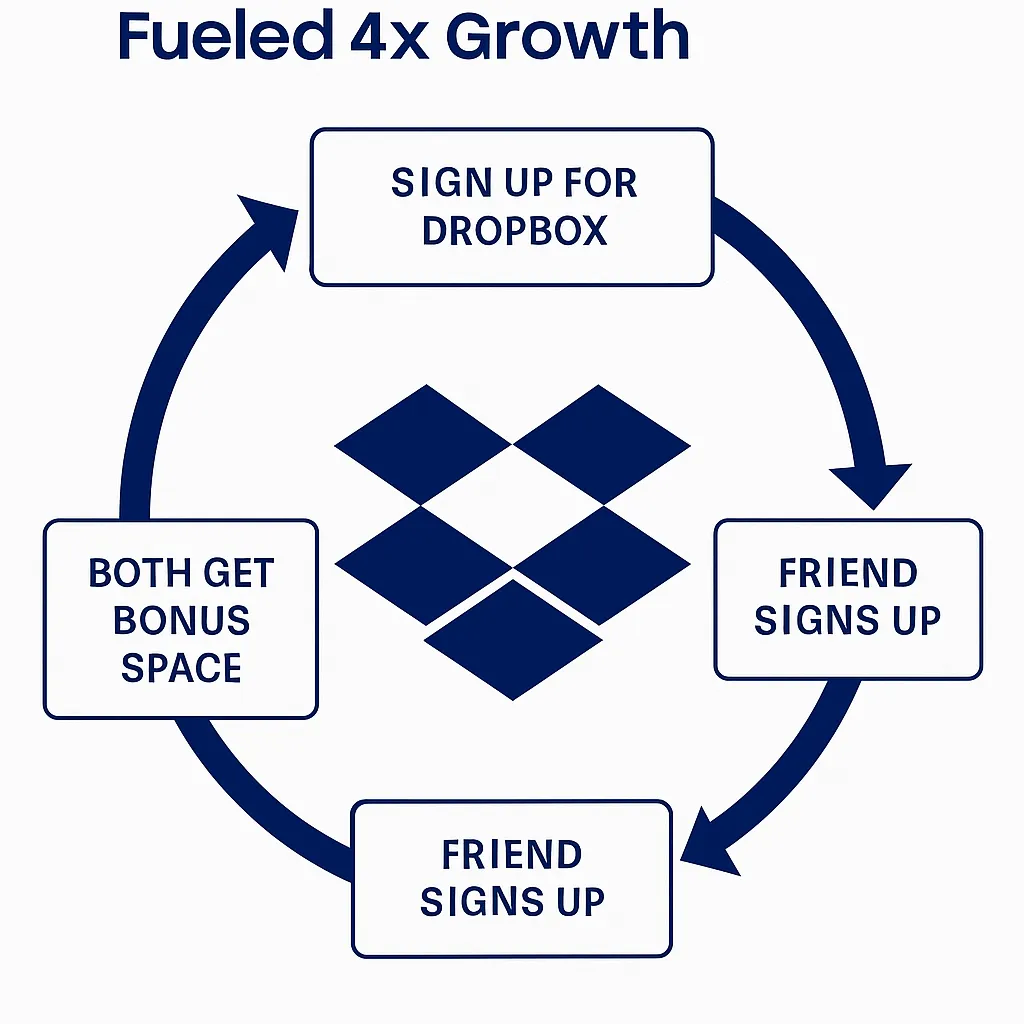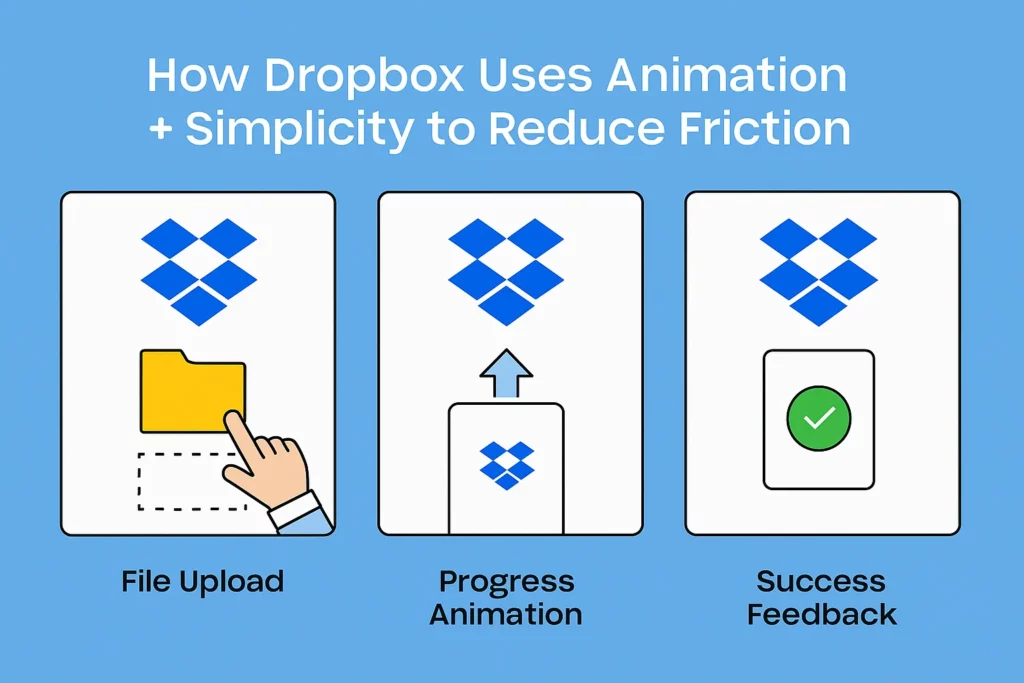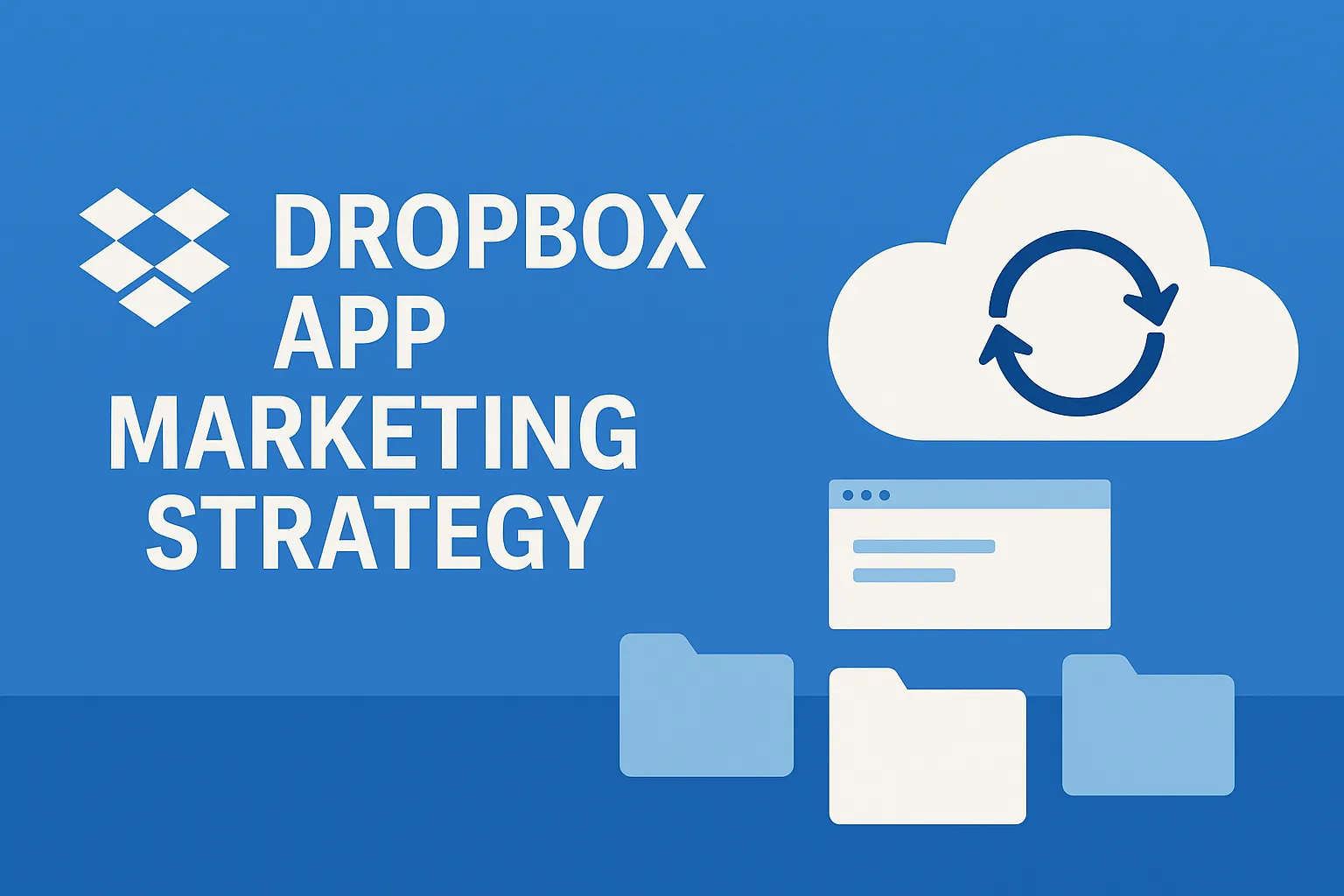Before Google Drive made “cloud” a buzzword and iCloud got baked into your iPhone, there was Dropbox — the scrappy file-sharing tool that grew from a Reddit demo video to millions of loyal users. And no, it didn’t start with a massive ad budget or celebrity founder. It started with one big idea: make syncing stupid simple.
Dropbox didn’t just market storage — it sold peace of mind. It made sure your files were there when you needed them, without technical jargon or clunky steps. Refer TechCrunch But behind its smooth UX was a marketing machine built on virality, trust, and product love.
In this blog, we’re unpacking Dropbox’s marketing magic — how it won hearts, created viral loops, and continues to grow in an age of fierce SaaS competition. And if you’re building a Dropbox-style app or aiming to disrupt the file-sharing space, Miracuves can help you get there, faster and smarter.

The Dropbox Origin Play: Simplicity Sells (Hard)
Dropbox started as a Y Combinator-backed startup, but its breakout moment came when founder Drew Houston posted a demo video to Hacker News and Reddit. Instead of chasing big media or running ads, Dropbox did this:
What Worked:
- The video explained the product like a conversation, not a lecture.
- It addressed real problems: “Ever emailed yourself a file?”
- It connected emotionally with early adopters (techies, students, remote workers).
The Viral Referral Loop: Give More, Get More
Dropbox’s marketing masterstroke was its referral program — now legendary in SaaS circles.
How It Worked:
- Get 500MB of bonus space for each friend you invited.
- Friends get the same benefit — win-win.
- Referrals could be shared via social, email, or even personal invite links.
The Results:
- Grew signups by 60% overnight
- Reduced paid ad dependency
- Created a network effect among students, teams, and freelancers
Product-Led Growth: Let the Experience Speak
Dropbox’s product experience was its best salesperson.
- Sync “just worked” — cross-device, real-time, offline-ready.
- UI was clean, minimal, and jargon-free.
- Install-and-forget behavior = long-term retention.
Want to build a Dropbox-like experience? Focus on frictionless onboarding and invisible performance — Miracuves can help you nail that.
Freemium Done Right: Bait Without the Trap
Dropbox made freemium feel generous, not bait-and-switch.
Freemium Model Highlights:
- Free plan with 2GB storage, sync tools, and mobile access.
- Upgrades only became relevant after trust was built.
- No annoying pop-ups, no forced upsells — just helpful nudges.
SEO + Content = Quiet Domination
Dropbox didn’t scream for attention — it just showed up wherever you searched:
- “How to share large files?” — Dropbox blog.
- “Secure document collaboration?” — Dropbox landing page.
- “Cloud storage for teams?” — You guessed it.
They built a content engine around user intent, not fluff.
App Store Optimization + UX Harmony
Dropbox’s mobile app had one mission: mirror the desktop experience.
Mobile Growth Tactics:
- Keyword-rich descriptions like “backup, share, sync files”
- Clean, fast-loading UI optimized for both iOS and Android
- Auto-login and face ID sync for seamless return visits
B2B Expansion: From Solo Users to Entire Teams
Dropbox used bottom-up adoption — employees loved it, then brought it into teams. That’s how Dropbox broke into enterprise without fancy sales calls.
Team Marketing Tactics:
- Free for individuals, paid “Dropbox for Teams” upgrades
- Admin dashboards, activity logs, user permissions
- Co-branded webinars with productivity tools (Slack, Trello)
Building a team-collaboration app? Use the freemium-to-enterprise ladder just like Dropbox Clone with Miracuves.
Visual Identity + Trust Messaging
Dropbox’s clean blue-and-white design created a sense of security. But they didn’t stop there:
- Used icons, tooltips, and microcopy to educate users.
- Subtle animations made file actions feel trustworthy.
- Reinforced privacy, uptime, and encryption messaging.

Conclusion
Dropbox didn’t grow by shouting louder — it grew by syncing smarter. Its referral model, product-led growth, and quiet SEO playbook built loyalty without hard sells.
Want to replicate that magic with your own storage or sync solution?
At Miracuves, we help innovators launch high-performance app clones that are fast, scalable, and monetization-ready. Ready to turn your idea into reality? Let’s build together.
FAQs
What made Dropbox’s referral program so effective?
It offered real, immediate value (more storage) and rewarded both sides — turning users into brand ambassadors.
Can I use the same freemium model in my app?
Yes — if the free tier builds trust and provides core value. Don’t upsell too early or users bounce.
Is Dropbox’s marketing still relevant today?
Absolutely. The product-led, SEO-heavy, trust-first model is more relevant than ever in today’s SaaS landscape.
What features are key in a Dropbox-style app clone?
Syncing, cross-device access, sharing, permissions, version history, and third-party integrations.
How does Dropbox keep users coming back?
Frictionless UX, low learning curve, and invisible syncing make it habit-forming — even addictive.
Can Miracuves build me a Dropbox clone?
100%. Miracuves offers customizable Dropbox-style app clones with scalable file systems, sharing tools, admin features, and branded UX.








